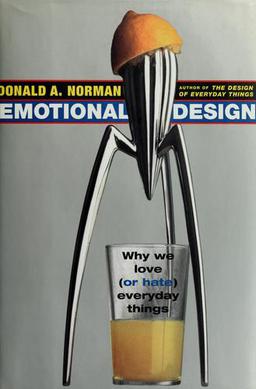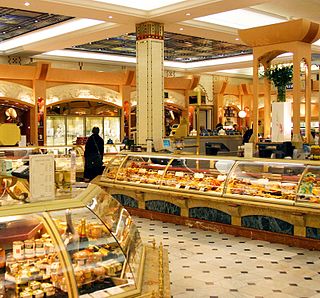Related Research Articles
Proxemics is the study of human use of space and the effects that population density has on behavior, communication, and social interaction.
Applied psychology is the use of psychological methods and findings of scientific psychology to solve practical problems of human and animal behavior and experience. Educational and organizational psychology, business management, law, health, product design, ergonomics, behavioural psychology, psychology of motivation, psychoanalysis, neuropsychology, psychiatry and mental health are just a few of the areas that have been influenced by the application of psychological principles and scientific findings. Some of the areas of applied psychology include counseling psychology, industrial and organizational psychology, engineering psychology, occupational health psychology, legal psychology, school psychology, sports psychology, community psychology, neuropsychology, medical psychology and clinical psychology, evolutionary psychology, human factors, forensic psychology and traffic psychology. In addition, a number of specialized areas in the general area of psychology have applied branches. However, the lines between sub-branch specializations and major applied psychology categories are often mixed or in some cases blurred. For example, a human factors psychologist might use a cognitive psychology theory. This could be described as human factor psychology or as applied cognitive psychology. When applied psychology is used in the treatment of behavioral disorders there are many experimental approaches to try and treat an individual. This type of psychology can be found in many of the subbranches in other fields of psychology.
Interaction design, often abbreviated as IxD, is "the practice of designing interactive digital products, environments, systems, and services." While interaction design has an interest in form, its main area of focus rests on behavior. Rather than analyzing how things are, interaction design synthesizes and imagines things as they could be. This element of interaction design is what characterizes IxD as a design field, as opposed to a science or engineering field.
Traffic psychology is a discipline of psychology that studies the relationship between psychological processes and the behavior of road users. In general, traffic psychology aims to apply theoretical aspects of psychology in order to improve traffic mobility by helping to develop and apply crash countermeasures, as well as by guiding desired behaviors through education and the motivation of road users.

In psychology, affordance is what the environment offers the individual. In design, affordance has a narrower meaning, it refers to possible actions that an actor can readily perceive.

Emotional Design is both the title of a book by Donald Norman and of the concept it represents.
Environmental psychology is a branch of psychology that explores the relationship between humans and the external world. It examines the way in which the natural environment and our built environments shape us as individuals. Environmental psychology emphasizes how humans change the environment and how the environment changes humans' experiences and behaviors. The field defines the term environment broadly, encompassing natural environments, social settings, built environments, learning environments, and informational environments. According to an article on APA Psychnet, environmental psychology is when a person thinks of a plan, travels to a certain place, and follows through with the plan throughout their behavior.

Servicescape is a model developed by Booms and Bitner to emphasize the impact of the physical environment in which a service process takes place. The aim of the servicescapes model is to explain behavior of people within the service environment with a view to designing environments that does not accomplish organisational goals in terms of achieving desired behavioural responses. For consumers visiting a service or retail store, the service environment is the first aspect of the service that is perceived by the customer and it is at this stage that consumers are likely to form impressions of the level of service they will receive.
Behavior settings are theorized entities that help explain the relationship between individuals and the environment - particularly the social environment. This topic is typically indexed under the larger rubric of ecological psychology. However, the notion of behavior setting is offered here in more detail and with more specificity than is found in the larger entry under ecological psychology or environmental psychology.
Enactivism is a position in cognitive science that argues that cognition arises through a dynamic interaction between an acting organism and its environment. It claims that the environment of an organism is brought about, or enacted, by the active exercise of that organism's sensorimotor processes. "The key point, then, is that the species brings forth and specifies its own domain of problems ...this domain does not exist "out there" in an environment that acts as a landing pad for organisms that somehow drop or parachute into the world. Instead, living beings and their environments stand in relation to each other through mutual specification or codetermination" (p. 198). "Organisms do not passively receive information from their environments, which they then translate into internal representations. Natural cognitive systems...participate in the generation of meaning ...engaging in transformational and not merely informational interactions: they enact a world." These authors suggest that the increasing emphasis upon enactive terminology presages a new era in thinking about cognitive science. How the actions involved in enactivism relate to age-old questions about free will remains a topic of active debate.
Privacy regulation theory was developed by social psychologist Irwin Altman in 1975. This theory aims to explain why people sometimes prefer staying alone but at other times like get involved in social interactions, discussing privacy as "a selective control of access to the self or to one's group".
Social presence theory explores how the "sense of being with another" is influenced by digital interfaces in human-computer interactions. Developed from the foundations of interpersonal communication and symbolic interactionism, social presence theory was first formally introduced by John Short, Ederyn Williams, and Bruce Christie in The Social Psychology of Telecommunications. Research on social presence theory has recently developed to examine the efficacy of telecommunications media, including SNS communications. The theory notes that computer-based communication is lower in social presence than face-to-face communication, but different computer-based communications can affect the levels of social presence between communicators and receivers.

Interpersonal communication is an exchange of information between two or more people. It is also an area of research that seeks to understand how humans use verbal and nonverbal cues to accomplish several personal and relational goals. Communication includes utilizing communication skills within one's surroundings, including physical and psychological spaces. It is essential to see the visual/nonverbal and verbal cues regarding the physical spaces. In the psychological spaces, self-awareness and awareness of the emotions, cultures, and things that are not seen are also significant when communicating.
Experiential interior design (EID) is the practice of employing experiential or phenomenological values in interior experience design. EID is a human-centered design approach to interior architecture based on modern environmental psychology emphasizing human experiential needs. The notion of EID emphasizes the influence of the designed environments on human total experiences including sensorial, cognitive, emotional, social, and behavioral experiences triggered by environmental cues. One of the key promises of EID is to offer values beyond the functional or mechanical experiences afforded by the environment.
Social undermining is the expression of negative emotions directed towards a particular person or negative evaluations of the person as a way to prevent the person from achieving their goals.
In architecture, spatial design, literary theory, and film theory—affective atmosphere refers to the mood, situation, or sensorial qualities of a space. Spaces containing atmosphere are shaped through subjective and intersubjective interactions with the qualia of the architecture. Atmosphere is linked with anthropology, architectural theory, critical theory, cultural geography, phenomenology of architecture, and pragmatism.
Technoself studies, commonly referred to as TSS, is an emerging, interdisciplinary domain of scholarly research dealing with all aspects of human identity in a technological society focusing on the changing nature of relationships between the human and technology. As new and constantly changing experiences of human identity emerge due to constant technological change, technoself studies seeks to map and analyze these mutually influential developments with a focus on identity, rather than technical developments. Therefore, the self is a key concept of TSS. The term "technoself", advanced by Luppicini (2013), broadly denotes evolving human identity as a result of the adoption of new technology, while avoiding ideological or philosophical biases inherent in other related terms including cyborg, posthuman, transhuman, techno-human, beman, digital identity, avatar, and homotechnicus though Luppicini acknowledges that these categories "capture important aspects of human identity". Technoself is further elaborated and explored in Luppicini's "Handbook of Research on Technoself: Identity in a Technological Environment".

Place attachment is the emotional bond between person and place, and one way of describing the relationship between people and spatial settings. It is highly influenced by an individual and his or her personal experiences. There is a considerable amount of research dedicated to defining what makes a place "meaningful" enough for place attachment to occur. Schroeder (1991) notably discussed the difference between "meaning" and "preference," defining meaning as "the thoughts, feelings, memories and interpretations evoked by a landscape" and preference as "the degree of liking for one landscape compared to another."

Behavioural design is a sub-category of design, which is concerned with how design can shape, or be used to influence human behaviour. All approaches of design for behaviour change acknowledge that artifacts have an important influence on human behaviour and/or behavioural decisions. They strongly draw on theories of behavioural change, including the division into personal, behavioural, and environmental characteristics as drivers for behaviour change. Areas in which design for behaviour change has been most commonly applied include health and wellbeing, sustainability, safety and social context, as well as crime prevention.
Transactionalism is a pragmatic philosophical approach to questions such as: what is the nature of reality; how we know and are known; and how we motivate, maintain, and satisfy our goals for health, money, career, relationships, and a multitude of conditions of life through mutually cooperative social exchange and ecologies. It involves the study and accurate thinking required to plan and utilize one's limited resources in the fundamental mechanics of social exchange or trans-action. To transact is learning to beat the odds or mitigate the common pitfalls involved with living a good and comfortable life by always factoring in the surrounding circumstances of people, places, things and the thinking behind any exchange from work to play.
References
- 1 2 Evans, G.W.; R.E. Wener (2007). "Crowding and personal space invasion on the train: Please don't make me sit in the middle". Journal of Environmental Psychology. 27: 90–94. doi:10.1016/j.jenvp.2006.10.002.
- ↑ Savin-Baden, Maggi (2007-11-16). EBOOK: Learning Spaces: Creating Opportunities for Knowledge Creation in Academic Life. McGraw-Hill Education (UK). ISBN 978-0-335-23525-4.
- ↑ Brierley Newell, P. (1995). "Perspectives on Privacy". Journal of Environmental Psychology. 15 (2): 87–104. doi:10.1016/0272-4944(95)90018-7.
- 1 2 Ramsden, E. (2009). "The Urban Animal: population density and social pathology in rodents and humans". Bulletin of the World Health Organization. 87 (2): 82. doi:10.2471/blt.09.062836. PMC 2636191 . PMID 19274352.
- 1 2 Newman, O (1996). Creating Defensible Space. USA: US Department of Housing and Urban Development, Office of Policy Development and Research.
- ↑ Osgood, C.E.; G.J. Suci; P.H. Tannebaum (1957). The Measurement of Meaning . USA: The Board of Trustees at the University of Illinois.
- ↑ Fischer, G.N.; C.Tarquino, J.C. Vischer (2004). "Effects of the self-schema on perception of space at work". Journal of Environmental Psychology. 24: 131–140. doi:10.1016/s0272-4944(03)00052-5.
- ↑ "In-art Studio". in-artstudio.com. Retrieved 2019-04-19.
- 1 2 "The Open-Office Concept Is Dead". Fortune. Retrieved 2018-12-04.
- ↑ "2013 Workplace Survey" (PDF). gensler.com/uploads/document/337/file/2013_US_Workplace_Survey_07_15_2013.pdf. 2013-07-15.
- ↑ Baudrillard, J. (1996). The System of Objects (Verso English ed.). United Kingdom: Bookmarque.
- 1 2 Mackenzie, N.E.; M.A. Wilson (2000). "Social Attributions Based on Domestic Interiors". Journal of Environmental Psychology. 20 (4): 343–354. doi:10.1006/jevp.2000.0181.
- 1 2 Rice, Charles (2007). The Emergence of the Interior. Oxon: Routledge.
- ↑ Brewer, Johanna; Dourish, Paul (2008-12-01). "Storied spaces: Cultural accounts of mobility, technology, and environmental knowing". International Journal of Human-Computer Studies. Mobile human-computer interaction. 66 (12): 963–976. doi:10.1016/j.ijhcs.2008.03.003. ISSN 1071-5819.
- 1 2 3 "室内设计心理学 - 百度文库". wenku.baidu.com. Retrieved 2022-04-03.
- ↑ Whyte, William H., Social Life of Small Urban Spaces (Documentary), Municipal Art Society of New York, retrieved 2022-04-03
- ↑ Edwards, M.J.; W.G. Gjertson (September 2008). "La Maison de Verre: Negotiating a Modern Domesticity". Journal of Interior Design. 34 (1): 15–37. doi: 10.1111/j.1939-1668.2008.00004.x .